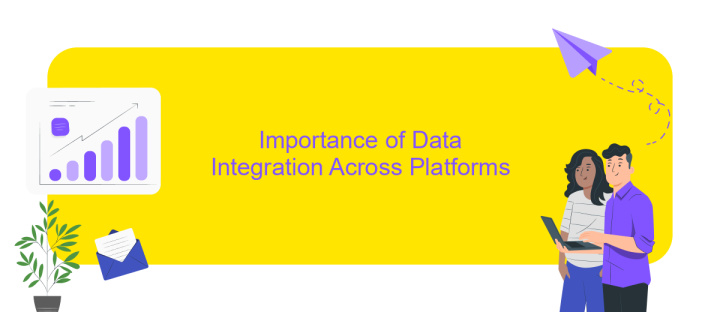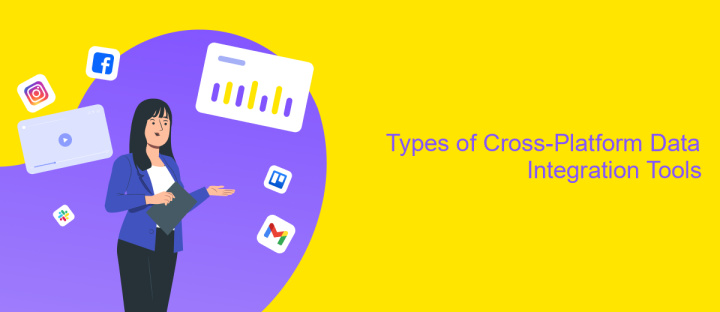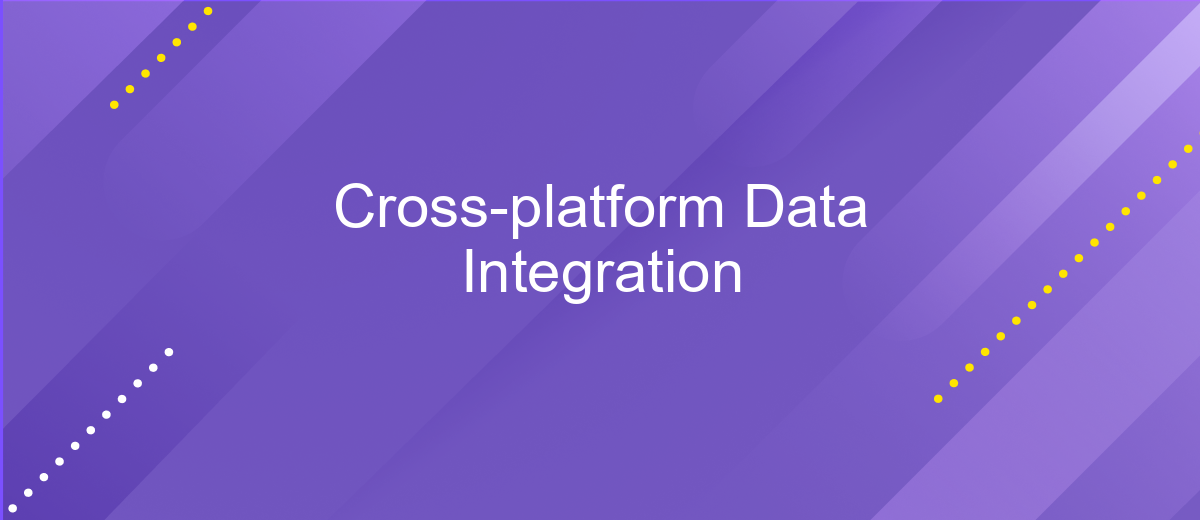Cross-platform Data Integration
In today's interconnected digital landscape, cross-platform data integration has become essential for businesses aiming to streamline operations and enhance decision-making. By seamlessly merging data from diverse systems, organizations can achieve a unified view of their information assets, driving efficiency and innovation. This article explores the key strategies, tools, and best practices for effective cross-platform data integration, ensuring your enterprise stays competitive in a data-driven world.
Overview
Cross-platform data integration is a critical aspect of modern data management, enabling seamless data exchange and consistency across diverse systems and platforms. This process ensures that data from various sources can be combined, transformed, and utilized efficiently, regardless of the underlying technology or platform.
- Ensures data consistency and integrity across multiple platforms
- Facilitates seamless data exchange between disparate systems
- Enables comprehensive data analysis and reporting
- Improves operational efficiency and decision-making
- Supports scalability and flexibility in data management
Effective cross-platform data integration requires robust strategies and tools to handle the complexities of different data formats, structures, and protocols. By leveraging advanced integration solutions, organizations can achieve a unified view of their data, leading to more informed decisions and better business outcomes. This integration is essential for maintaining a competitive edge in an increasingly data-driven world.
Challenges in Cross-Platform Data Integration

Cross-platform data integration presents numerous challenges, primarily stemming from the heterogeneity of data sources and formats. Different platforms often use distinct data structures, making it difficult to achieve seamless integration. Additionally, the need for real-time data synchronization can complicate the process, requiring robust mechanisms to ensure data consistency and integrity across platforms. Security concerns also play a significant role, as integrating data from multiple sources increases the risk of data breaches and unauthorized access.
Another major challenge is the scalability of integration solutions. As the volume of data grows, maintaining efficient and effective integration becomes increasingly complex. Tools like ApiX-Drive can be instrumental in addressing these issues, offering automated workflows and real-time data synchronization across various platforms. However, even with such tools, organizations must continuously monitor and optimize their integration processes to adapt to evolving data landscapes and technological advancements.
Importance of Data Integration Across Platforms

In today's interconnected world, data integration across various platforms is crucial for businesses to maintain a competitive edge. By seamlessly combining data from different sources, organizations can gain comprehensive insights, streamline operations, and make informed decisions. Effective data integration eliminates data silos, ensuring that information flows smoothly across departments and systems.
- Enhanced Decision-Making: Unified data provides a holistic view, enabling better analysis and strategic planning.
- Operational Efficiency: Integrated data reduces redundancy and inconsistency, leading to more efficient processes and workflows.
- Improved Customer Experience: Access to consolidated data helps in understanding customer needs and preferences, fostering personalized interactions.
- Innovation and Agility: With integrated data, businesses can quickly adapt to market changes and innovate effectively.
Overall, cross-platform data integration is essential for leveraging the full potential of data. It not only enhances operational capabilities but also drives growth and innovation. Businesses that invest in robust data integration strategies are better positioned to thrive in an increasingly data-driven landscape.
Types of Cross-Platform Data Integration Tools

Cross-platform data integration tools are essential for businesses that manage data across various systems and platforms. These tools enable seamless data flow, ensuring consistency and accuracy across different applications and databases. They come in various types, each catering to specific integration needs and challenges.
Understanding the different types of cross-platform data integration tools can help organizations choose the right solution for their unique requirements. Here's a brief overview of the main categories:
- ETL (Extract, Transform, Load) Tools: These tools extract data from multiple sources, transform it into a suitable format, and load it into a target system.
- Data Virtualization Tools: These tools provide a unified view of data from various sources without physically moving the data.
- API Management Tools: These tools facilitate the integration of data through APIs, enabling real-time data exchange between systems.
- iPaaS (Integration Platform as a Service): These cloud-based platforms offer comprehensive integration solutions, including pre-built connectors and workflows.
Choosing the right type of cross-platform data integration tool depends on factors such as data volume, complexity, and integration frequency. By selecting the appropriate tool, businesses can achieve efficient and effective data management across diverse systems.


Best Practices for Implementing Cross-Platform Data Integration
Implementing cross-platform data integration requires careful planning and execution to ensure seamless data flow and consistency. Start by clearly defining your integration goals and the specific data sets that need to be synchronized. Use standardized data formats and protocols such as JSON, XML, or REST APIs to facilitate interoperability between different platforms. It is also crucial to establish robust data validation and error-handling mechanisms to maintain data integrity throughout the integration process.
Utilizing specialized integration tools like ApiX-Drive can significantly streamline the setup and management of cross-platform data integrations. ApiX-Drive offers a user-friendly interface to connect various applications and automate data transfers without extensive coding knowledge. Regularly monitor and update your integrations to adapt to any changes in the data sources or target systems. Implementing security best practices, such as encryption and access controls, is essential to protect sensitive data during transit and storage. By following these best practices, you can achieve efficient and secure cross-platform data integration.
FAQ
What is cross-platform data integration?
Why is cross-platform data integration important?
What are the common challenges in cross-platform data integration?
How can I automate cross-platform data integration?
How do I ensure data security during cross-platform integration?
Apix-Drive is a universal tool that will quickly streamline any workflow, freeing you from routine and possible financial losses. Try ApiX-Drive in action and see how useful it is for you personally. In the meantime, when you are setting up connections between systems, think about where you are investing your free time, because now you will have much more of it.

